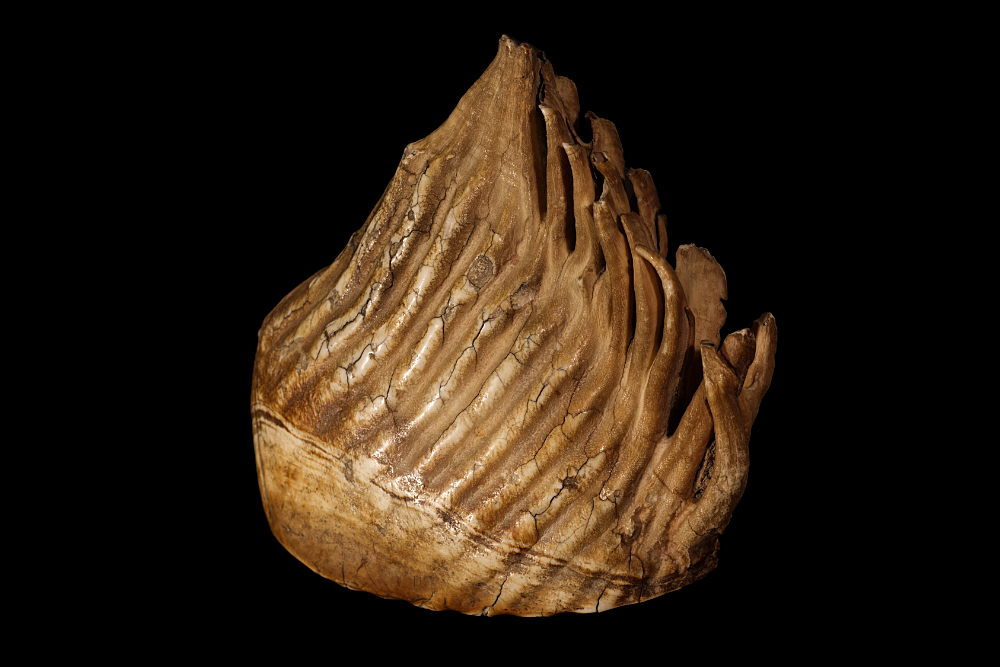Elephant molar

Elephant teeth are physiologically fascinating. Best known are the tusks, which are in fact modified incisors. The molars are equally important; their wide, flat surface perfect for grinding vegetation.
In most mammals a set of baby teeth is replaced by permanent adult teeth – not so in elephants. When a tooth wears down another one is pushed forward to replace it, rather than growing vertically through the gum as happens with other mammals. This replacement can happen up to six times in an elephant’s life. Elephants are divided into African elephants, of which there are two species, and the Asian elephant. Interestingly, the teeth can help determine which is which. The ridges on the chewing surface of an Asian elephant molar run in parallel lines, while the ridges on an African elephant molar create diamond patterning. Indeed, this patterning is what gives African elephants their Latin genus ‘Loxodonta’, meaning diamond.
UCC Natural Collections
Contact us
